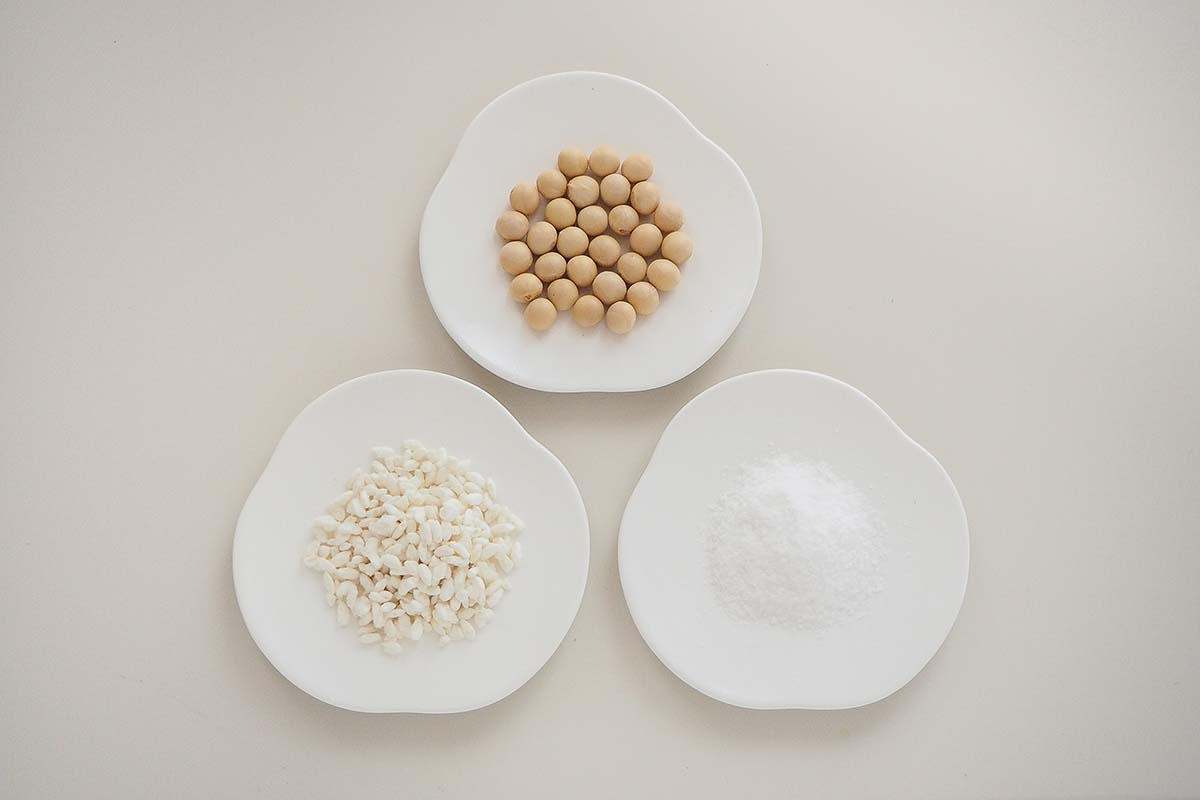What is Miso? Everything You Need to Know About Miso
Last October, American food professionals visited fermented food producers to deepen their knowledge of Japanese fermentation culture during the “Hakko Tourism in Japan” tour campaign. As part of the tour, organizers held a tasting session where guests gave candid advice from the perspective of the American market to food product manufacturers looking to enter the United States market.
How is miso fermented?
Miso is one of the representative foods of Japan and is a fermented seasoning that is indispensable for making Japanese food (washoku) such as miso soup. To make miso, the key ingredients soybeans and grains such as rice and wheat are sprinkled with aspergillus oryzae, a native bacterium of Japan, mixed further with salt, adjusted for the texture with water, and finally fermented and aged for a certain period.
Through the fermentation process, the soybean protein is decomposed into amino acids to enhance the taste, and the grain-derived carbohydrates are decomposed into starch to give off sweetness. In addition, vitamins and minerals that were not contained in the raw ingredients themselves are also produced. In 2013, Japanese food was designated as a UNESCO Intangible Cultural Heritage which led to Japanese food becoming increasingly popular as healthy food, attracting attention not only in Japan, but all over the world, and the export volume of miso has more than tripled since 2000. The amount exported to the United States is by far the largest. (Source: Ministry of Finance “Trade Statistics”)

How was Japan’s unique miso born?
Upon examining the artifacts excavated from the Yayoi period (around 10 BC to 3 AD) in Japan, it is speculated that the Yayoi pottery was equipped with a lid that could be sealed and was used to make fermented foods.
The prototype of miso, hishio, which is said to have been produced during this time period, has three types:
- Koku-bishio, made by fermenting rice, wheat, beans, etc.
- Shishi-bishio, made by adding salt to the meat of birds and animals
- Kusa-bishio, made by soaking fruits, wildflowers, seaweed, etc. in salt.
It is said that koku-bishio later developed into miso when soybeans, originally native to China, were ultimately introduced to Japan through the Korean Peninsula, and thus Japan’s unique miso was born.
Miso comes in different variety
Currently there are about 800 miso manufacturers in Japan and they produce different varieties of miso with flavors ranging from sweet to salty, colors including white, yellow, red and black, and textures ranging from viscous pastes to hardened ones. Each miso shows a unique characteristic developed to suit each region of the Japanese archipelago which stretches from north to south. Sweet types of miso can be used as is and go well with vegetables while salty ones are more suitable for cooking. Beef hamburger patties have strong meat taste and matches with sauce made with salty miso. Recently, powder-type miso has also been developed, recommended to be sprinkled on fried potatoes to make “miso fried potatoes”.
I mentioned in the beginning that miso is one of the representative foods in Japan and is a fermented seasoning indispensable for cooking Japanese food such as miso soup. It goes well with any kind of ingredients and is versatile. I recommend you to try it.
For Further Reading
Misaki Iwaki is a practical cooking expert, author, and TV personality with a passion for promoting health through food. With expertise in miso, she has explored 60 miso breweries worldwide and authored books on the subject. Misaki's Gachi Miso, prepared in wooden barrels, is a sought-after culinary gem.

